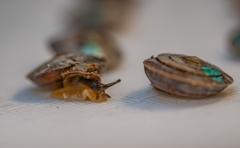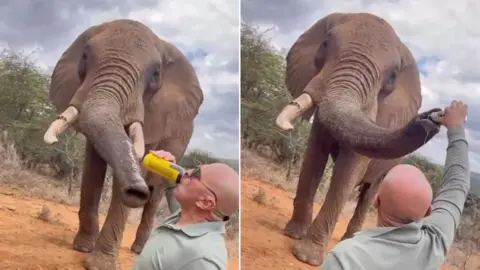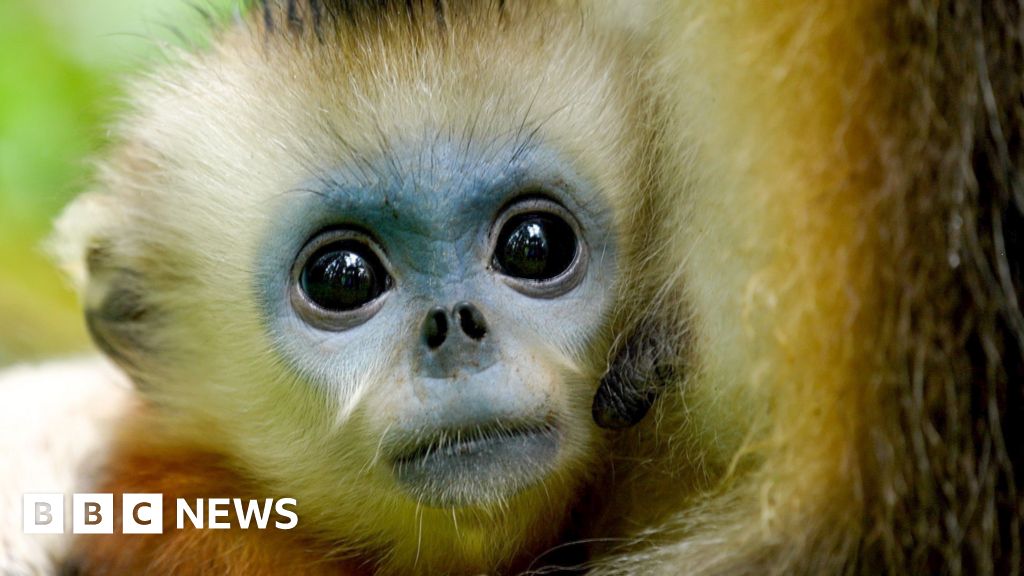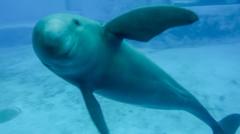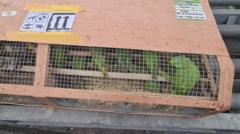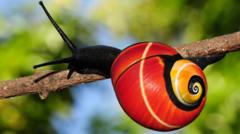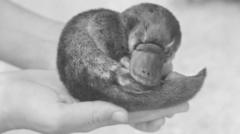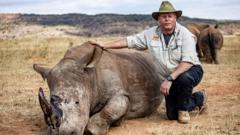More than 1,300 diminutive, critically endangered snails bred at Chester Zoo have made their way back to the wild on a remote Atlantic island. This release marks a vital step in reintroducing two species of Desertas Island land snails that haven't been seen in the wild for a century. Initially thought to be extinct, these tiny molluscs faced dire threats from invasive species brought by humans, such as rats, mice, and goats, which decimated their population.
The startling discovery of about 200 surviving individuals on the rocky cliffs of Deserta Grande island, near Madeira, prompted an urgent conservation initiative from a team dedicated to preserving these species. After rescuing the last remaining snails, they were transported to several zoos, including Chester Zoo, where habitat conditions were carefully replicated in miniature tanks to support the snails' survival and reproduction.
At the zoo, around 1,329 baby snails were bred, equipped with color-coded identification dots made with non-toxic materials to aid in tracking their progress in the wild. Dinarte Teixeira, a conservation biologist, explained that this will help conservationists monitor the snails’ movement, growth, survival rate, and adaptation to their restored environment.
The release site, Bugio Island, serves as a protected nature reserve where invasive species have been eradicated, providing a safe haven for the snails. Gerardo Garcia from Chester Zoo heralded this reintroduction as a significant achievement in the broader recovery plan for the species. If successful, further releases may be carried out in the following year.
Heather Prince, also from Chester Zoo, emphasized the ecological importance of snails, which contribute to soil health and serve as a food source for other native wildlife. Their role is vital for the overall health of their ecosystems, highlighting the necessity of conservation efforts for often-overlooked species.
The startling discovery of about 200 surviving individuals on the rocky cliffs of Deserta Grande island, near Madeira, prompted an urgent conservation initiative from a team dedicated to preserving these species. After rescuing the last remaining snails, they were transported to several zoos, including Chester Zoo, where habitat conditions were carefully replicated in miniature tanks to support the snails' survival and reproduction.
At the zoo, around 1,329 baby snails were bred, equipped with color-coded identification dots made with non-toxic materials to aid in tracking their progress in the wild. Dinarte Teixeira, a conservation biologist, explained that this will help conservationists monitor the snails’ movement, growth, survival rate, and adaptation to their restored environment.
The release site, Bugio Island, serves as a protected nature reserve where invasive species have been eradicated, providing a safe haven for the snails. Gerardo Garcia from Chester Zoo heralded this reintroduction as a significant achievement in the broader recovery plan for the species. If successful, further releases may be carried out in the following year.
Heather Prince, also from Chester Zoo, emphasized the ecological importance of snails, which contribute to soil health and serve as a food source for other native wildlife. Their role is vital for the overall health of their ecosystems, highlighting the necessity of conservation efforts for often-overlooked species.

